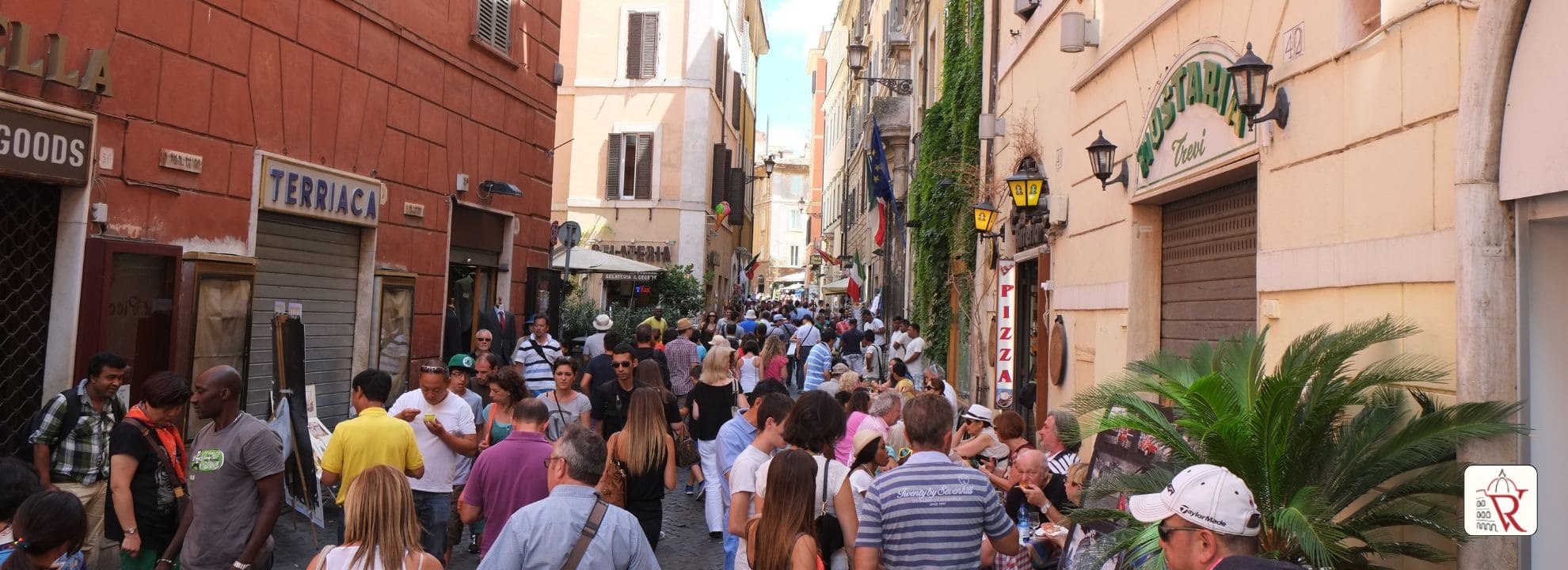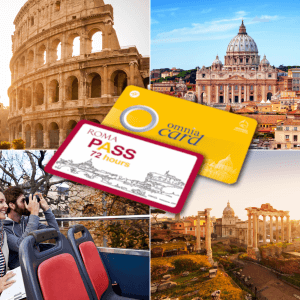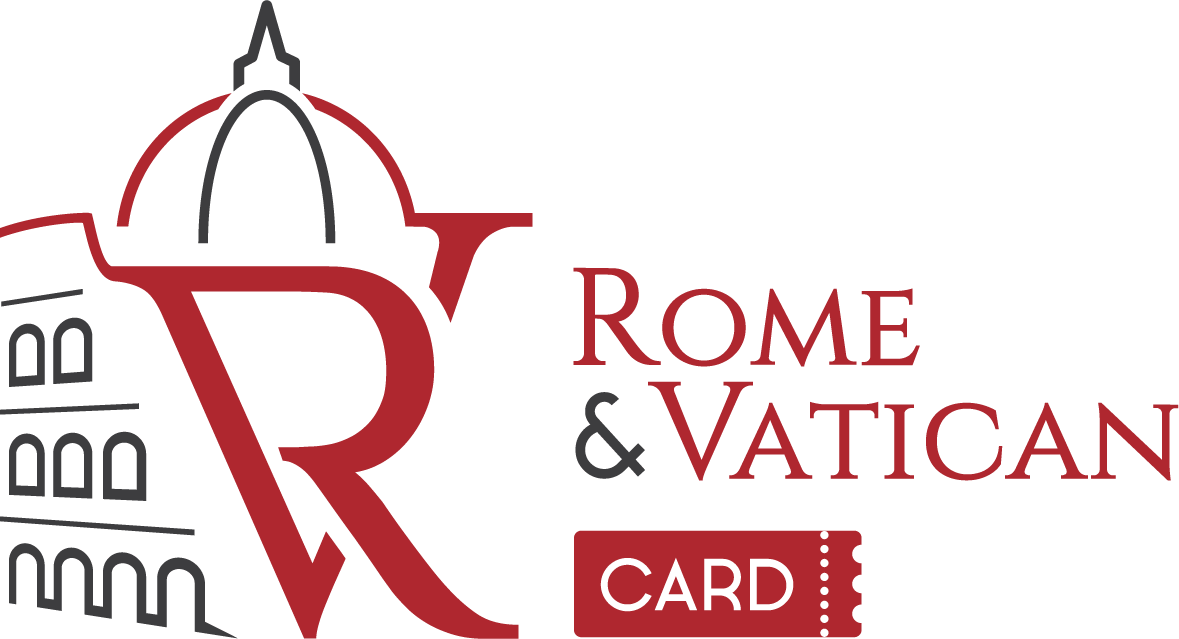10 Tips to avoid crowds in Rome
- 6 min read
In this guide you will find all the information you need about how to experience Rome without the crowds, including practical tips for visiting famous landmarks at quieter times, exploring hidden neighborhoods, enjoying peaceful parks, and taking day trips to nearby historical sites. From late-afternoon visits to the Colosseum to early-morning strolls through Piazza Navona, you’ll discover strategies to savor the Eternal City at your own pace.


Omnia card 72h + Roma Pass - Jubilee 2025
Visit the Colosseum in the Late Afternoon
The Colosseum remains one of Rome’s most iconic attractions, welcoming over five million visitors every year. However, to enjoy this ancient amphitheater without the overwhelming rush, it’s best to plan your visit late in the day—ideally around 5:30 PM, just before closing time.
At this hour, the light is softer, the heat of the day has faded, and most tour groups have already departed. This timing allows for a slower, more contemplative exploration of its towering arches and underground chambers. You’ll be able to imagine the roaring crowds of ancient Rome with fewer interruptions from today’s tourists.
Local tip: After leaving the Colosseum, take a short walk to the Monti neighborhood. Around Piazza della Madonna dei Monti, you’ll find lively yet relaxed wine bars—perfect for an evening aperitivo.
Wander Through the Park of the Aqueducts
Far from the bustling city center lies Parco degli Acquedotti, a peaceful green space where the ruins of ancient Roman aqueducts stretch across the horizon. Among them, the majestic Aqua Claudia still stands tall as a reminder of Rome’s engineering brilliance.
Only 30 minutes from the center by metro, the park offers the perfect setting for a quiet afternoon walk, cycling, or even a picnic. You’ll see locals jogging, children playing, and photographers capturing the timeless beauty of the stone arches against the open sky.
Pro tip: Skip crowded trattorias and prepare your own picnic. Visit the nearby Via Appia Nuova Market for fresh cheeses, salumi, and crusty bread—ideal for enjoying under the aqueducts’ shade.
Taste Testaccio Like a Local
Unlike Rome’s postcard neighborhoods, Testaccio offers a truly authentic slice of Roman life. Known for its culinary heritage, this district is a paradise for food lovers. Visit during weekday afternoons to avoid the lunch rush, and explore the covered Testaccio Market where stalls brim with seasonal produce, fresh pasta, and street food specialties like supplì and trapizzino.
Beyond food, Testaccio is home to the Pyramid of Cestius and the archaeological site of Monte dei Cocci, an ancient mound formed from discarded amphorae used to store olive oil.
Wake Up Early for Aventine Hill View
The Aventine Hill offers one of the city’s most enchanting secrets: the famous keyhole view at the Knights of Malta garden. Through this tiny aperture, you’ll see St. Peter’s Basilica perfectly framed, with the gardens of the Priory in the foreground. Arriving before 9 AM ensures not only a quiet experience but also beautiful morning light.
Afterward, walk to the nearby Bocca della Verità (Mouth of Truth)—a marble mask that has been testing honesty since medieval times. It opens at 9:30 AM, so you can visit without queuing.
Swap Crowded Trastevere for Trendy Pigneto
While Trastevere is a charming maze of cobbled streets, it can be packed during peak hours. For a quieter alternative, head to Pigneto, a bohemian neighborhood east of the center. Here, you’ll find colorful street art, vintage shops, independent cafés, and a thriving creative community.
On Sundays, the Pigneto market is a treasure trove of antiques, handmade crafts, and vinyl records. The atmosphere is relaxed, with far fewer tourists.
Bonus tip: In the evening explore Pigneto’s craft beer scene.
Spend a Quiet Day at Ostia Antica
A short 30-minute train ride from central Rome takes you to Ostia Antica, an ancient port city remarkably preserved under layers of silt. Here, you can wander along the Decumanus Maximus, explore the Neptune Baths, and step inside Roman apartments complete with mosaics.
The site is vast and rarely crowded, making it a peaceful escape from central Rome’s intensity. Visiting mid-morning on a weekday is ideal.
Lunch suggestion: After exploring, treat yourself to fresh seafood at Monumento dal 1884, a historic restaurant just a short drive away.
Enjoy the Roman Forum at Sunset
The Roman Forum—once the heart of political and social life in ancient Rome—takes on a magical glow in the late afternoon. Since entry is included in your Colosseum ticket, you can plan a combined visit.
As the sun sets, the light reflects off ancient temples, basilicas, and marble columns, creating a serene atmosphere. Seek out quieter corners like the Temple of Vesta or the Basilica Aemilia for a moment of peace.
Discover the Hidden Basilica of San Clemente
Only a few minutes from the Colosseum stands the Basilica of San Clemente, a layered treasure of Roman history. On the surface, you’ll admire stunning 12th-century mosaics. Beneath, you can explore a 4th-century church, a Roman house, and even a Mithraeum—a temple dedicated to the god Mithras.
Visiting tip: Come mid-morning or early afternoon on a weekday to avoid school groups and guided tour clusters.
Explore Piazza Navona Before Breakfast
Piazza Navona is one of Rome’s liveliest squares, but before 9 AM, it’s a serene open-air gallery. Without the bustling crowds, you can take in Bernini’s Fountain of the Four Rivers, the Fountain of the Moor, and the Church of Sant’Agnese in Agone in quiet contemplation.
Visit the Trevi Fountain at Night
The Trevi Fountain draws visitors at all hours, but the evening offers a special kind of magic. After 9 PM, the crowds thin, the heat subsides, and the fountain glows under dramatic lighting. This is the perfect time to toss a coin over your shoulder and make a wish, following the centuries-old tradition.
Bonus experience: For a truly unique perspective, join an underground tour beneath the fountain to see the remains of an ancient aqueduct that has been supplying water for over two millennia.
Related articles
Omnia Card and Rome Pass 72h: What’s Included, How it Works, Discounts, Prices, Reviews & Benefits
Omnia Card and Roma Pass 72h: included and discounted attractions in Rome
